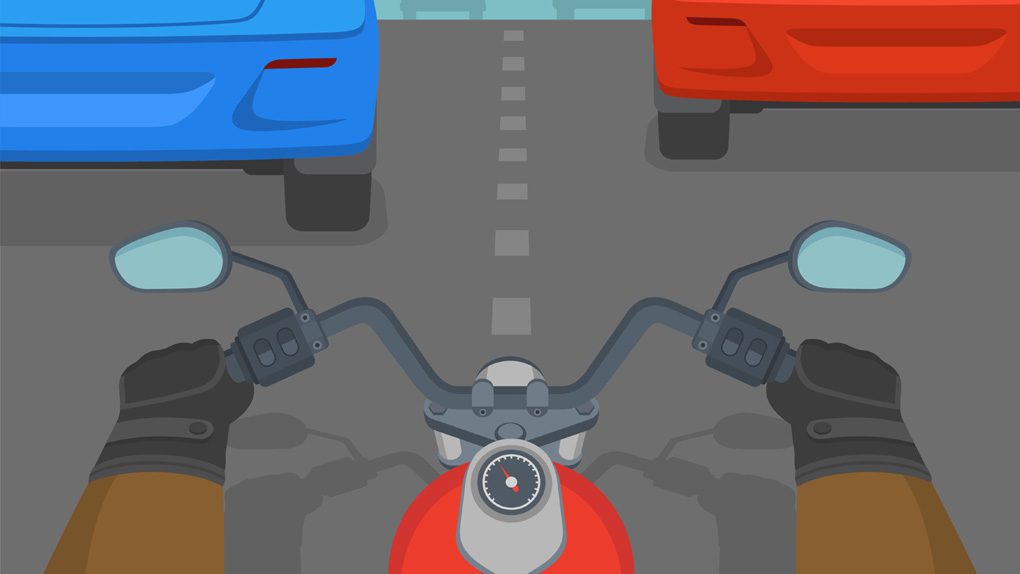Paying attention to motorcycles and other vehicles on the road can become complicated, especially when you consider the different circumstances of each motorist. Generally, drivers inside cars or other enclosed vehicles will have more armor or protection than motorcyclists on their bikes. Further, motorcycles are significantly smaller than the average car. This makes it physically possible for motorcycles to swerve between vehicles, even on a tightly packed, slow-going road.
But is this activity legal? And are there potential risks related to motorcyclists taking their motorcycles between lanes? If you want to learn more about safety on the road, especially if you or someone you know has received injuries due to this behavior, we can help. The motorcycle and car accident lawyers from Mott & Moffett have extensive experience working on legal matters relating to vehicular accidents. We can assist you in navigating the legal system. Our clients trust us to work toward their recovery and success, and we can do the same for you.
What Is Lane Splitting in Texas?
Lane splitting refers explicitly to the action of motorcyclists going between lanes on the road, where white lines are typically painted to divide cars and guide traffic. Most individuals agree that lane splitting refers to motorcycles moving between lanes of slowly moving cars and other vehicles. If the cars are stopped completely, some refer to this activity as lane splitting, while others refer to it as “lane filtering” instead.
Many view this activity as positive for motorcyclists as well as advantageous for the rest of the traffic. Bikers can move more quickly toward their final destination and general traffic can proceed faster.
Is Lane Splitting Illegal in Texas?
Whether fortunately or unfortunately, lane splitting is considered illegal in Texas. While motorists on the road seem to appreciate lane splitting and filtering, lawmakers and law enforcement typically act against its legalization. This may not necessarily stop all motorists from participating in this activity; however, the decision to lane split is still common on the road.
In the United States, lane splitting is only considered explicitly legal in California. There are some indications that not all lawmakers in Texas agree with lane splitting remaining illegal, including the 2019 drafting of SB 273. If the Senate Transportation Committee passed SB 273, there is a possibility that the legality and perception surrounding lane splitting would have changed.
What Are the Penalties for Lane Splitting in Texas?
Law enforcement officers often dole out tickets for motorcyclists caught lane splitting, as there is a fee associated with driving on the shoulder or other areas of the road. If an accident occurs as a result of lane splitting, the motorcyclist may not be able to receive total compensation for their injuries and other damages.
If parties other than the motorcyclist are considered responsible for the accident, meaning the motorcycle rider is not the only one to act negligently, the cyclist may receive compensation. For example, another motorist may be partially responsible if their speeding, intoxication, or distracted driving results in an accident.
Injured From a Lane Splitting Accident in Texas? Reach Out for Help From Mott & Moffett’s Injury Lawyers
If you or someone you know is facing injuries after a motorcyclist decided to lane split on the road, we can offer valuable support. The injury lawyers from Mott & Moffett have access to helpful resources, proven strategies, valuable tools, and tailored information that may benefit your legal circumstances. We invite you to contact us at your earliest convenience if you want our assistance.
You can reach us by calling (888) 596-6582 or completing the contact form on our website. Our compassionate and talented team of attorneys looks forward to hearing from you and working together toward your recovery and success. When you reach out to us, we can begin processing details related to your case, answering your questions, and clarifying your related concerns.


